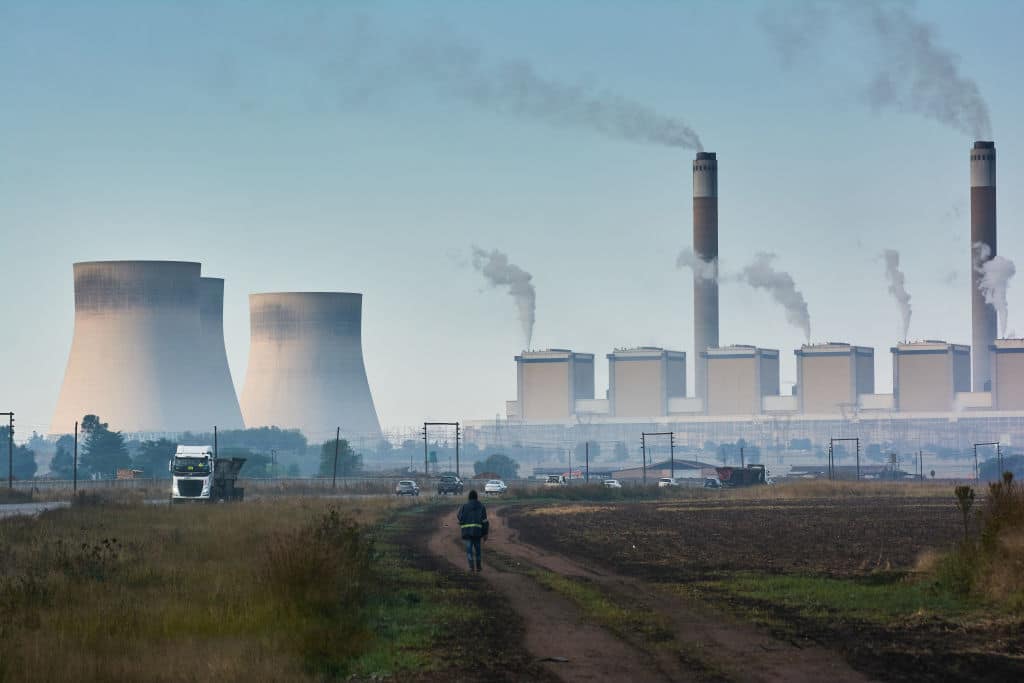South Africa is set to surpass carbon emission goals, but for the wrong reasons. Loadshedding and the subsequent impact on heavy industry have, ironically, proven to be a boon for the environment.
South Africa’s unexpected emissions victory is a silver lining in an otherwise dark cloud. South Africa has recently outperformed its United Nations’ Nationally Determined Contributions (NDCs) emissions reduction targets. However, this victory is not the result of a concerted green initiative or a shift towards renewable energy. Instead, it is a byproduct of the country’s ongoing loadshedding crisis, a situation that has seen coal-fueled power plants and electricity-dependent heavy industries frequently offline.
The loadshedding crisis, a crippling issue for the nation, has hampered economic growth and caused widespread frustration. In a perverse twist, it has also led to a significant reduction in the country’s carbon emissions.
The year 2023 has been the darkest so far, with over 100 consecutive days of continuous scheduled power outages, at an estimated daily cost of $50 million to the economy. With an estimated 80% of the country’s power generation fleet still coal-reliant, it was forecast that South Africa would only begin to reduce its carbon emissions footprint after 2025, a goal that it is set to surpass at the current rate.
So significant have the electricity outages been that the country appears to be ahead of this target, said Crispian Olver, Executive Director of South Africa’s Presidential Climate Commission, in an interview with Bloomberg on Monday.
Loading...
“The country may achieve its climate goals as per the NDCs without closing any coal stations thanks to loadshedding and poor plant output.”
While this bodes well for South Africa meeting its climate objectives, it has also been pivotal in securing international financing for the country’s Just Energy Transition plan, which provided $8.5 billion in 2021, the vast majority of which was to be invested in transitions toward renewable energy solutions such as wind and solar power.
However, Minister of Electricity Kgosientso Ramokgopa believes that it is possible to both extend the life of the existing coal power fleet of state-owned generation utility Eskom, while still keeping the country on track to meet its climate goals, a seemingly contradictory position.
“We are modeling the impact of emissions and cost implications, and we will decide whether to extend the life and by what period. But I want to emphasize that we will not renege on our NDCs, our decarbonization agenda, and net zero path by 2050,” said Ramokgopa during a media briefing last week.
However, energy analyst and Managing Director of EE Business Intelligence Chris Yelland believes that these goals are not in conflict. “Low economic growth and loadshedding have already led to a slow decline in electricity consumption,” he said, speaking to FORBES AFRICA. “If we are just running the coal-fired stations we have now…just to see us through the crisis of the next two or three years, that may be palatable to donor countries of the Just Energy Transition Partnership.”
However, Yelland believes both the immediate and most sustainable path forward is still for the country to aggressively pursue the development of renewable energy sources, but it requires the will from the government.
“There are very short-term options for renewable energy, particularly in the domestic, commercial, and agricultural space in particular,” continues Yelland. “But the government’s focus seems to be on the utility-scale projects, and those will take a minimum of two to three years to come onstream…And that’s not quick enough, we need solutions now.”
Loading...
